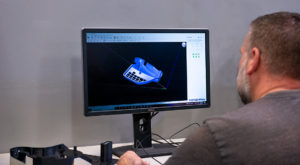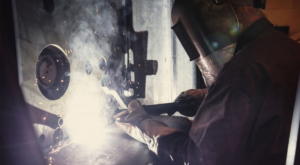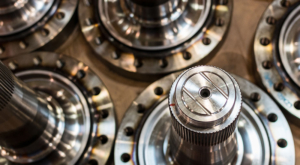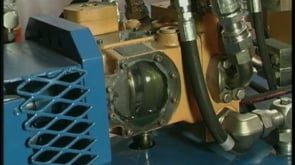–Chris McMillan
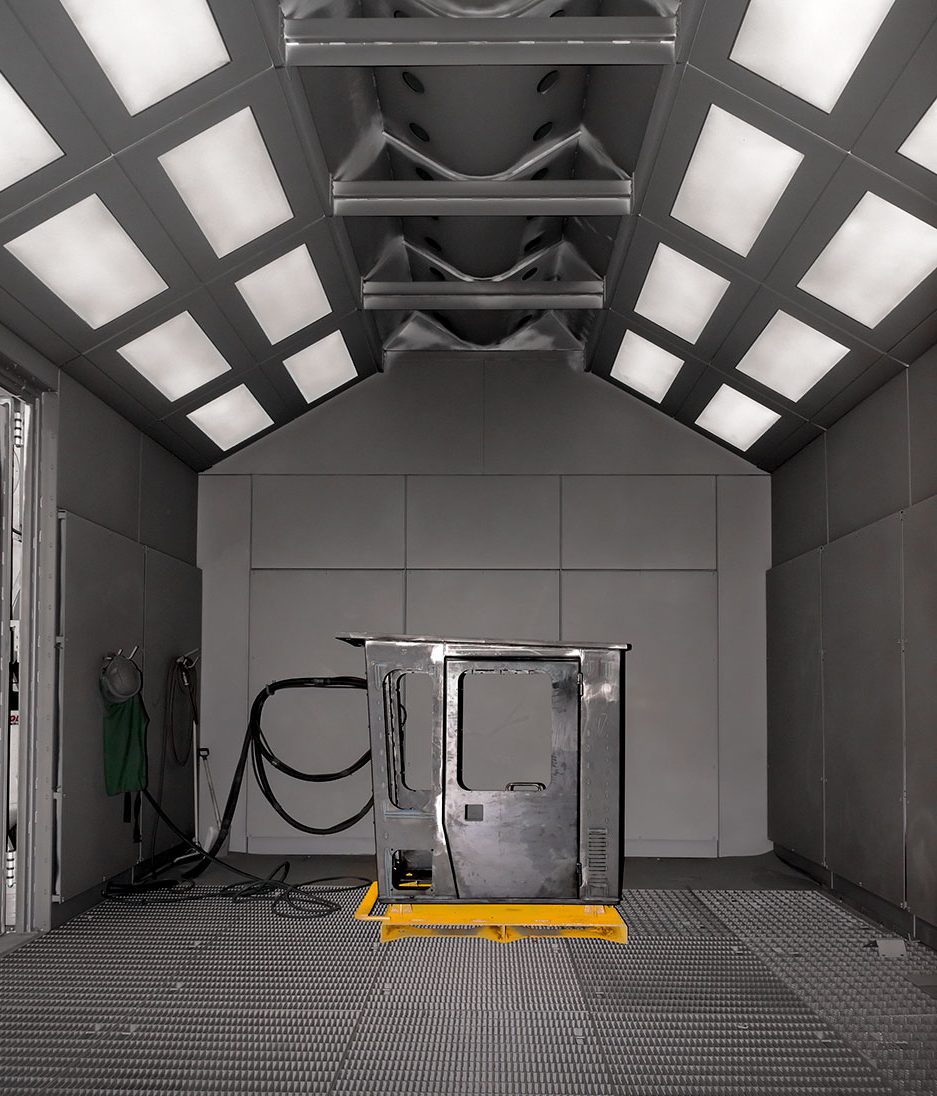
A Tigercat cab waits to be sandblasted before the first coat of paint is applied.
Tigercat Cab production Improvements
The most important aspect of any forestry machine is operator safety. This means that the operator’s station must not only be comfortable and ergonomically correct, but also provide protection from the many hazards that are encountered on logging operations throughout the world. Over the years, operators’ cabs have become more sophisticated, offering the latest in technology and comfort. And consequently, the cabs have become more complex and labour intensive to build.
In early 2016, Tigercat’s cab manufacturing process was consolidated within the Morton Avenue plant in Brantford. The objective was to house all cab production operations under one roof, from raw steel to final paint. With the exception of forwarder cabs and the large logger series cabs, all machine operators’ stations are built at the repurposed Morton Avenue facility. To keep the production process running smoothly, a constant supply of components is required at all stages. Everything starts with the laser cutter.
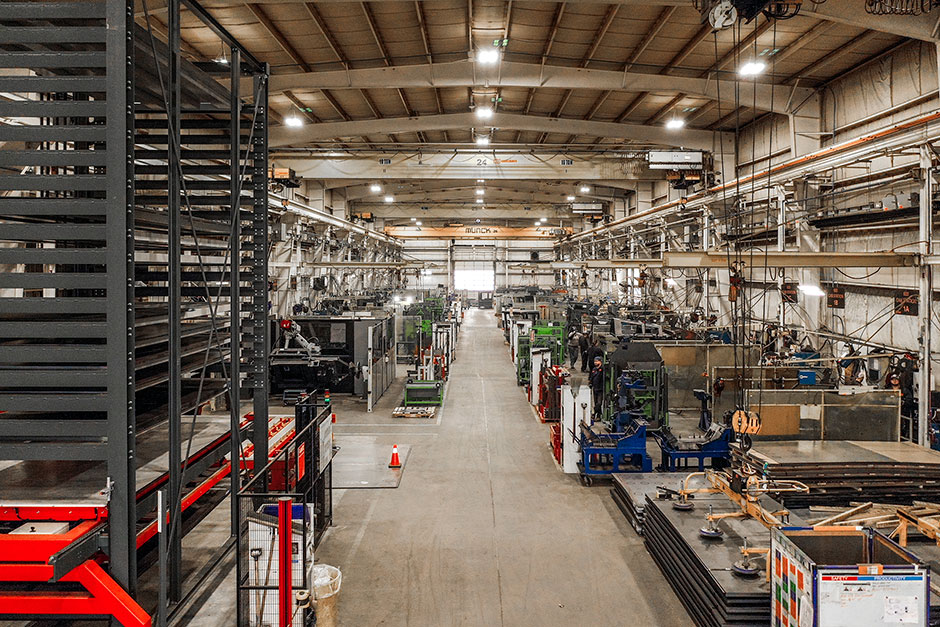
Tigercat’s cab production facility.
Improved technology
In early 2019, Tigercat invested in a new laser cutter along with an automated storage and loading system to increase efficiency and throughput. The laser cutter uses a fibre optic cutting system which is smaller, yet generates twice the power from the same amount of current as the previous CO2 lasers. Operators have noticed a significant increase in cutting speed. In some cases, cutting times have decreased by up to 50%.
Another time-saving feature is the loading system and storage tower. Raw material is stored in the tower in cassettes and sorted by thickness. The control software determines the thickness required for the next cutting cycle and the robotic loading arms access the correct cassette, pull the raw sheet and transfer it to the cutting bed. When the previous cycle is complete, the outer bed drops, and the freshly cut metal slides out as the new sheet moves in. As the next cutting cycle begins, the newly cut pieces are transferred to a cassette. Then parts are unloaded and sorted into kits. Each kit – representing the steel required for a complete cab – is sent on for forming, fitting and welding.
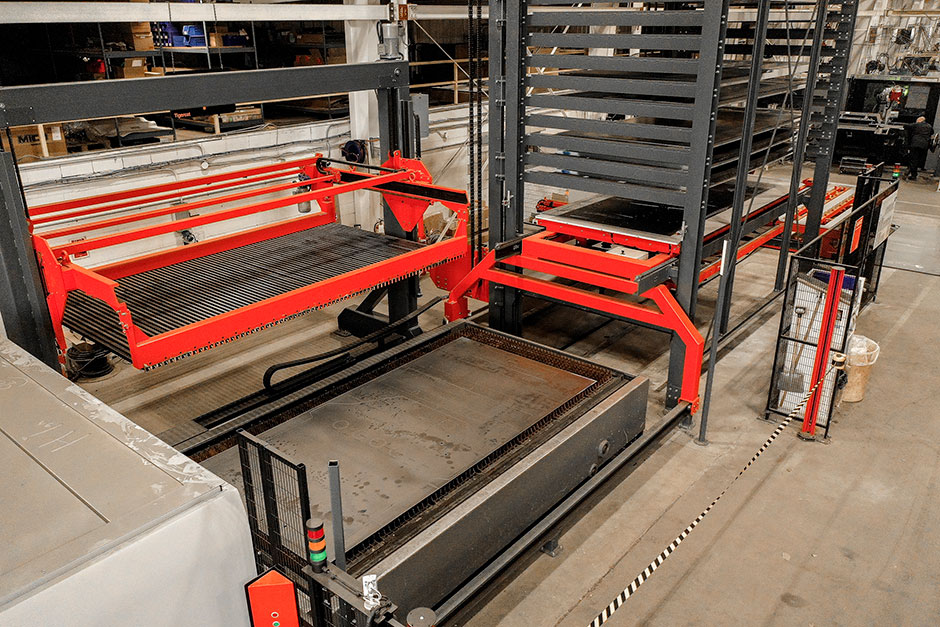
The laser cutting system has significantly increased production.
A large portion of the plant is occupied by welding cells and a dual cell robotic welder. Weldments are gradually moved from one cell to the next. Each area contains specially designed jigs for different parts of the cab. Once the welding is complete, the cab shells are sent to the blasting booth.
The complete cab weldment is blasted, sanded, cleaned and sealed, before painting. The addition of a drying oven is another tool that has helped speed up the process. Drying time has been drastically reduced by 80%, allowing the assemblers to begin the final assembly stage much sooner than was previously possible. All of the interior and exterior components are installed on the cab shell. Control panels and wiring harnesses are assembled at Tigercat’s electrical systems assembly plant in nearby Paris, Ontario. Other sub-assemblies such as seats, joysticks, HVAC and skylights are built in separate work stations within the cab facility.
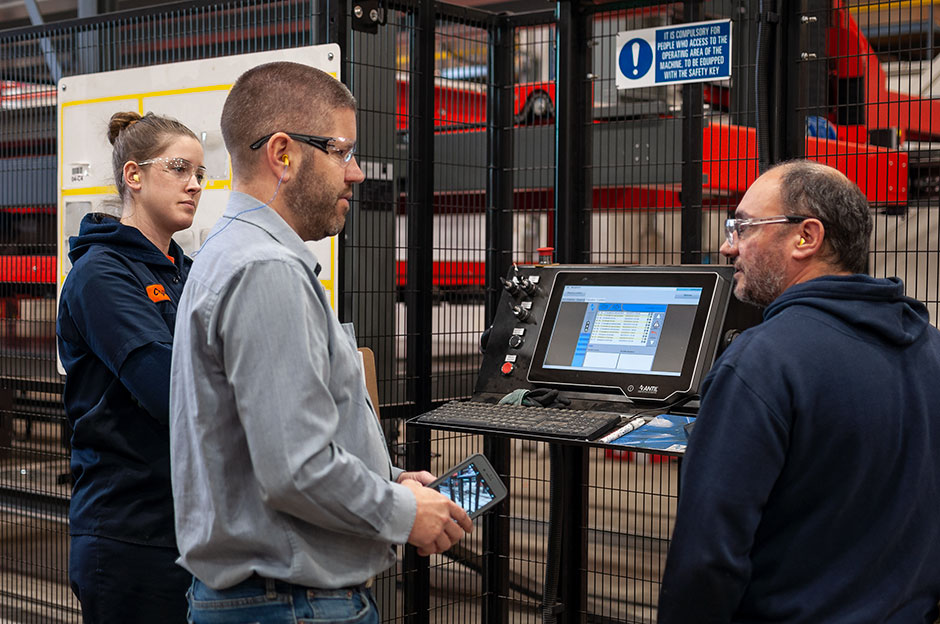
Plant manager Chris Brousseau, middle, checks in with laser cutter operators.
Improved efficiency and quality
By having all fabrication and assembly operations in one plant, planners are able to monitor the process and address any issues that might arise. Plant manager, Chris Brousseau explains, “Having assembly under the same roof as fabrication and paint allows the welders and painters to see the finished cab and where such things as insulation and panels are located.” The production planners work closely with the shop supervisors in a continuous improvement loop. All cabs undergo a PDI inspection before they are deployed to other production plants for installation on machines. The recent capital investment, along with streamlining of the production process, has significantly increased production capacity. But it is not enough. To meet the increased demand for Tigercat equipment, additional machinery investments are underway. Stay tuned.
Interested in learning more about Tigercat manufacturing processes? Visit the related articles below.






